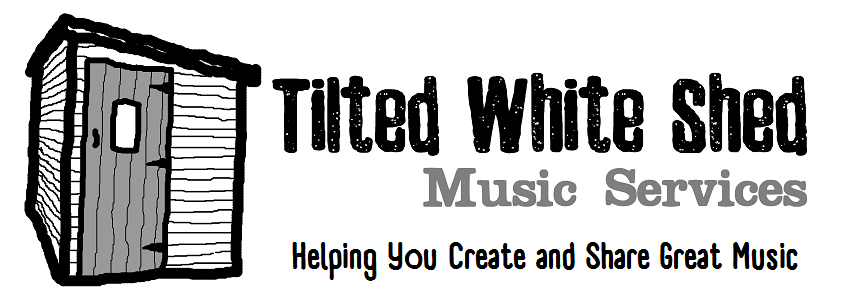Rhyme is an essential ingredient to songwriting; there’s no doubt about it. Rhyme is used to define the structure of your song, draw attention to key messages in your lyric, and provide pleasure to the brain in much the same way as a piece of candy on the tongue. Because our brains understand rhyme innately, we as songwriters can use it in our pursuit of triggering an emotional response in a listener.
Rhyme and Structure
 In our quest to lead a listener through our song, it is crucial to help them understand the roadmap of the song, as the song winds through verses, choruses, bridges, etc. A truly effective way of using rhyme in this pursuit is to write different rhyme patterns (rhyme schemes) into each section of your song. For example, if your first verse rhymes line 1 and 2, and then rhymes lines 3 and 4, it will be very useful to use a different rhyme scheme in your chorus – say rhyming lines 2 and 4, but having no rhymes involving lines 1 and 3. It will then be most effective for you to use the same rhyme scheme in every verse, and use the same rhyme scheme in every chorus. The listener’s brain will use these clues (among many other clues that you’ll employ) to distinguish the verse from the chorus.
In our quest to lead a listener through our song, it is crucial to help them understand the roadmap of the song, as the song winds through verses, choruses, bridges, etc. A truly effective way of using rhyme in this pursuit is to write different rhyme patterns (rhyme schemes) into each section of your song. For example, if your first verse rhymes line 1 and 2, and then rhymes lines 3 and 4, it will be very useful to use a different rhyme scheme in your chorus – say rhyming lines 2 and 4, but having no rhymes involving lines 1 and 3. It will then be most effective for you to use the same rhyme scheme in every verse, and use the same rhyme scheme in every chorus. The listener’s brain will use these clues (among many other clues that you’ll employ) to distinguish the verse from the chorus.
Rhyme and “Spotlight” Positions
 Once your listener understands the rhyme schemes, they will anticipate the rhyme resolutions as the song unfolds. It is with great pleasure that a brain experiences an anticipated rhyme resolution, and this can be leveraged to spotlight important words and messages in your song. It is because of this phenomenon that the lyric line which resolves a rhyme will naturally solicit greater attention from your listener’s brain – a strong place to write an important word or message for greater impact.
Once your listener understands the rhyme schemes, they will anticipate the rhyme resolutions as the song unfolds. It is with great pleasure that a brain experiences an anticipated rhyme resolution, and this can be leveraged to spotlight important words and messages in your song. It is because of this phenomenon that the lyric line which resolves a rhyme will naturally solicit greater attention from your listener’s brain – a strong place to write an important word or message for greater impact.
Non-Rhymes
Does this mean that rhyming is mandatory? Of course not, but it does mean that your choice of how and when to rhyme, as well as when to avoid rhyming, will have an impact on the way your listener responds to your song. A song (or section of a song) with no rhymes at all will have a markedly different impact on your listener than one with a pattern of rhymes. And that might be exactly the impact you want it to have, to match the intention of your song.
Rhyme Frequency

Your choice of rhyme scheme will also have an impact on whether or not your song feels like it moves quickly or slowly. Too many rhymed resolutions in a section will make that section feel as if it moves slowly, and runs the risk of losing the listener’s attention. Short lines with rhymed endings can be used for the opposite effect – accelerating the song towards an important moment.
Rhyme Strength
This is where the game gets tricky. The strength of your rhyme resolution has a huge impact on its effect on your listener. A Perfect Rhyme, matching both the ending vowel and consonant sounds in your paired words, has a different impact than a Near Rhyme (or Family Rhyme), where the vowel sounds are the same but the consonant sounds are close but not matching, and the rhyme strength is even weaker when the consonant sounds match but the vowel sounds do not (Consonant Rhyme). The strength of your rhyme is directly related to how “satisfied” your listener’s brain will feel about the rhyme. A Perfect Rhyme will leave your listener feeling settled and satisfied. A non-rhyme (as imperfect as rhymes come) will leave your listener feeling unsettled and unsatisfied. Suddenly a songwriting tool emerges – we can use rhyme schemes and rhyme strength to support the emotional response that we’re trying to trigger in our listener! If I want the listener to feel an emotion that is more “settled”, “satisfied”, “feel-good”, then I’ll have a better chance of evoking that response if I use rhymes that support that feeling. Conversely, if I’m interested in making my listener feel an emotion that is more “unsettled” or “unresolved”, I’ll have a better chance of evoking that response with fewer and weaker rhyme resolutions, or no rhymes at all.
Wait A Minute…
This is NOT to say that rhymes hold all the power in songwriting. There are many other tools at our disposal when writing a song – melodic range and rhythm, harmonic shape, groove, tempo, and many other properties of the lyrics themselves – and each of them has the potential to help us or prevent us from evoking the intended response in our listeners.
Keep it Fresh
 Now that we have a sense of the power of rhyming in our songwriting, it’s crucial to do everything we can to AVOID getting cliché with our rhymes (forget EVER rhyming Moon and June in your songs unless you write a TRULY clever lyric which surprises us). Expand your search for rhyming words to include Near Rhymes, and you’ll likely find a fresh way to say what you want. NEVER write for the rhyme itself – choosing a crappy word that doesn’t help your song, just for the sake of the rhyme, is lazy songwriting and will hurt your song’s ability to reach your listener.
Now that we have a sense of the power of rhyming in our songwriting, it’s crucial to do everything we can to AVOID getting cliché with our rhymes (forget EVER rhyming Moon and June in your songs unless you write a TRULY clever lyric which surprises us). Expand your search for rhyming words to include Near Rhymes, and you’ll likely find a fresh way to say what you want. NEVER write for the rhyme itself – choosing a crappy word that doesn’t help your song, just for the sake of the rhyme, is lazy songwriting and will hurt your song’s ability to reach your listener.
Now Forget About Everything I Said Above
 The last thing I want to do is paralyze your songwriting muscles by telling you that you must engineer your song for optimal rhyming. It’s a fun exercise to think about these things upfront (and the seasoned writers will do this instinctively), but more likely you’ll want to use these ideas as you EDIT and REWRITE your songs – because you do edit and rewrite your songs, right? Right? Just say “yes”. The ideas above are meant to help you examine your songs to make sure that you’re getting the most out of your rhymes.
The last thing I want to do is paralyze your songwriting muscles by telling you that you must engineer your song for optimal rhyming. It’s a fun exercise to think about these things upfront (and the seasoned writers will do this instinctively), but more likely you’ll want to use these ideas as you EDIT and REWRITE your songs – because you do edit and rewrite your songs, right? Right? Just say “yes”. The ideas above are meant to help you examine your songs to make sure that you’re getting the most out of your rhymes.
Write On!
If you like what you read above, maybe you'd like to work with Allister at Tilted White Shed? Reach out through the Contact Us page.



